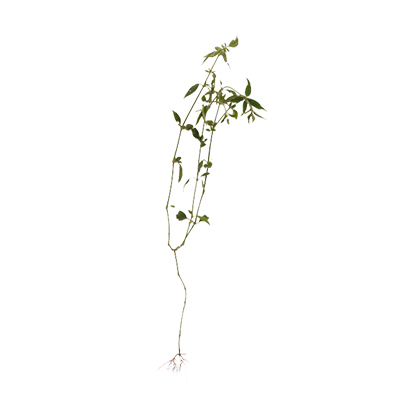Creeping Ruellia
Ruellia repens L.
Acanthaceae
Location in our garden
Principal



Synonym
Dipteracanthus cernuus (Roxb.) Santapau
Dipteracanthus lanceolatus Nees
Dipteracanthus repens Hassk.
Habitus
Shrubs. A creeping perennial shrub, growing up to 50 cm tall
Part Used
Leaves
Flowers
The Whole Plant
Growing Requirements
Full Sunshine
Need Shade
Habitat
Roadside
Grassland
Terrestrial
Overview
Ruellia repens is native to South China and South-East Asia. Etymologically, Latin Ruellia, after John de la Ruelle of Soissons, author of De natura plantarum (1536); Latin repens, creeping, referring to the habit of the plant. It is a desirable plant for its ornamental flowers using for lanscaping in parks, small gardens, flowerbed/border, and groundcover. It has been used in traditional Chinese medicine.
Vernacular Names
Nan cao (Chinese), Daun patok tuau (Malay).
Agroecology
Grows in open grasslands, roadsides, urban areas and disturbed areas. In China, it can be found at elevation of 100-900 m. Prefers tropical, sub-tropical/monsoonal climate. Easy to grow, and the rootzone preference to tolerance of the plant is moist, well-drained soils, to poor infertile, and fertile loamy soils.
Morphology
- Roots - lacking tuberlike swellings.
- Stems - almost 4-angled, finely pubescent or glabrescent, dichotomous, quadrangular, glabrous, articulate, and swollen at the nodes. The internodes are 6 cm long.
- Leaves - opposite, stalked leaves have thin papery leaf blades that are ovate to lance-shaped, 1.4-4 cm long and 0.8-2 cm wide.
- Flower - funnel-shaped flowers are white or pink to light purple in colour, 1.2-2 cm in diameter. The corolla lobes are ovate in shape, with rounded tips.
- Fruits - capsules that have a slightly hairy exterior, about 1.2 cm long and ripening to brownish yellow,12-16-seeded; septa with attached retinacula remaining attached to inner wall of mature capsule.
- Seeds - discoid, 3 mm in diameter, margin with a conspicuous band of appressed hygroscopic trichomes.
Cultivation
Generative propagation is by seeds.
Chemical Constituents
Steroids and triterpenes.
Traditional Medicinal Uses
- In China, R. repens is used to treat cough, heal wounds, ulcers, assuage toothache and stomachache.
- In Laos, Cambodia, Malaysia and Vietnam, the plant is used as above and for cooling purposes.
Part Used
Reference Sources
- Afzal, K., et al. (2015). GENUS RUELLIA: PHARMACOLOGICAL AND PHYTOCHEMICAL IMPORTANCE IN ETHNOPHARMACOLOGY. https://pubmed.ncbi.nlm.nih.gov/26665388/. 26-11-2021.
- Drug Times. (2020). Ruellia repens L. https://www.drugtimes.org/future/ruellia-repens-l.html. 26-11-2021. 26-11-2021.
- EFlora (No date). Flora of China: Ruellia repens Linnaeus. http://www.efloras.org/florataxon.aspx?flora_id=2&taxon_id=242345729. 26-11-2021.
- Flora Fauna Web. (2020). Ruellia repens L.. https://www.nparks.gov.sg/florafaunaweb/flora/3/3/3339.
- Kew Royal Botanic Gardens. (2017). Plants of the World Online: Ruellia repens L.. http://powo.science.kew.org/taxon/urn:lsid:ipni.org:names:54502-1. 26-11-2021.


